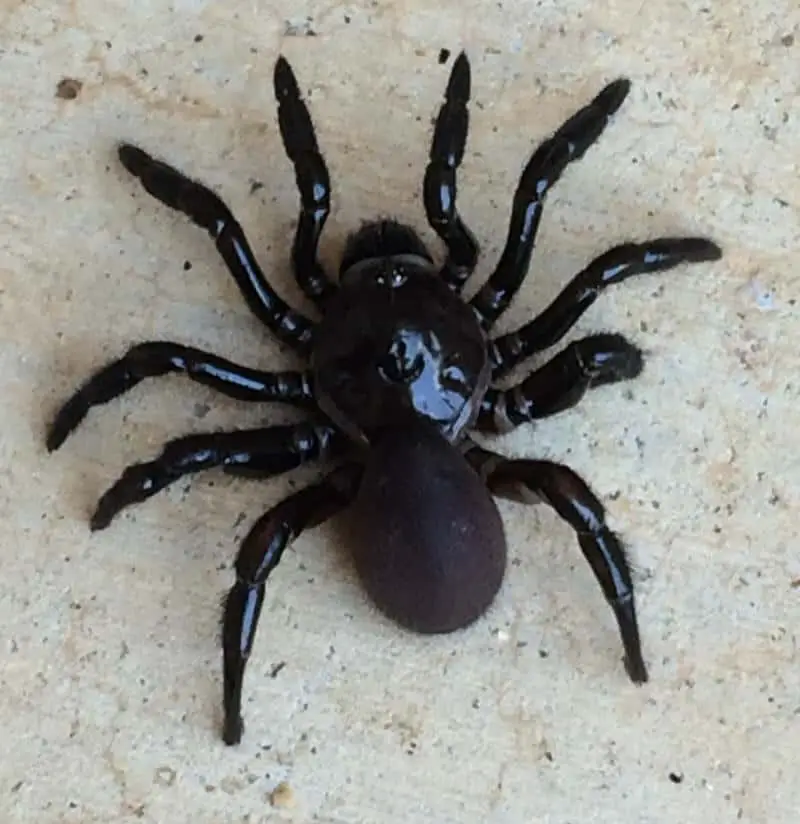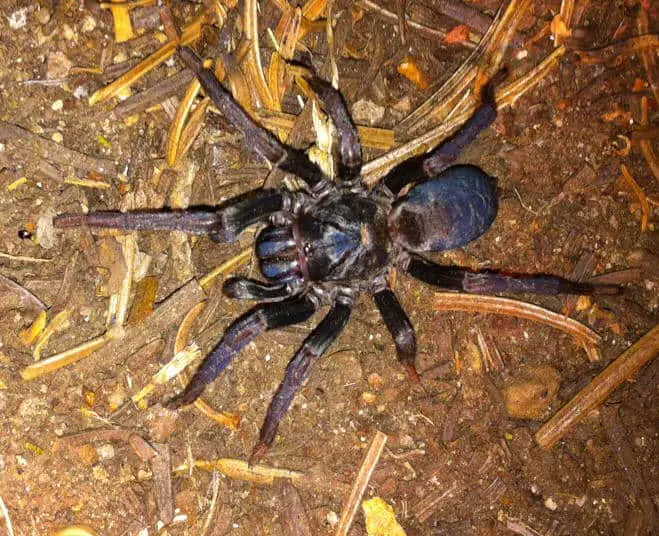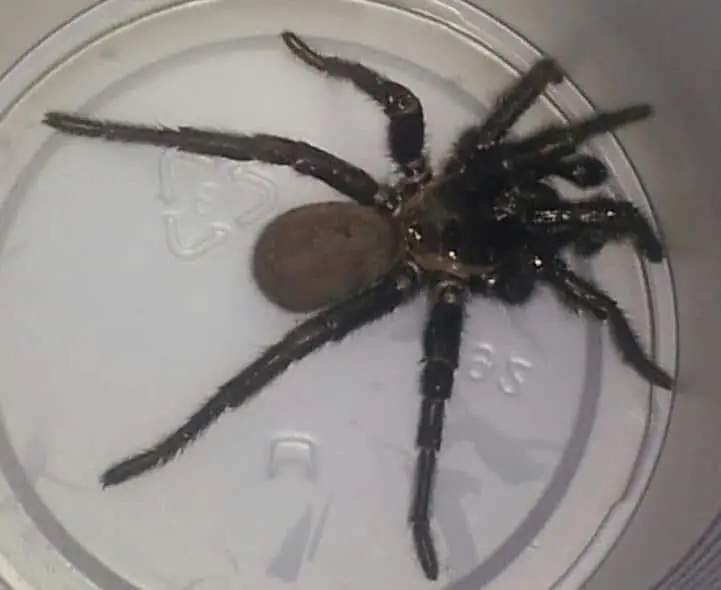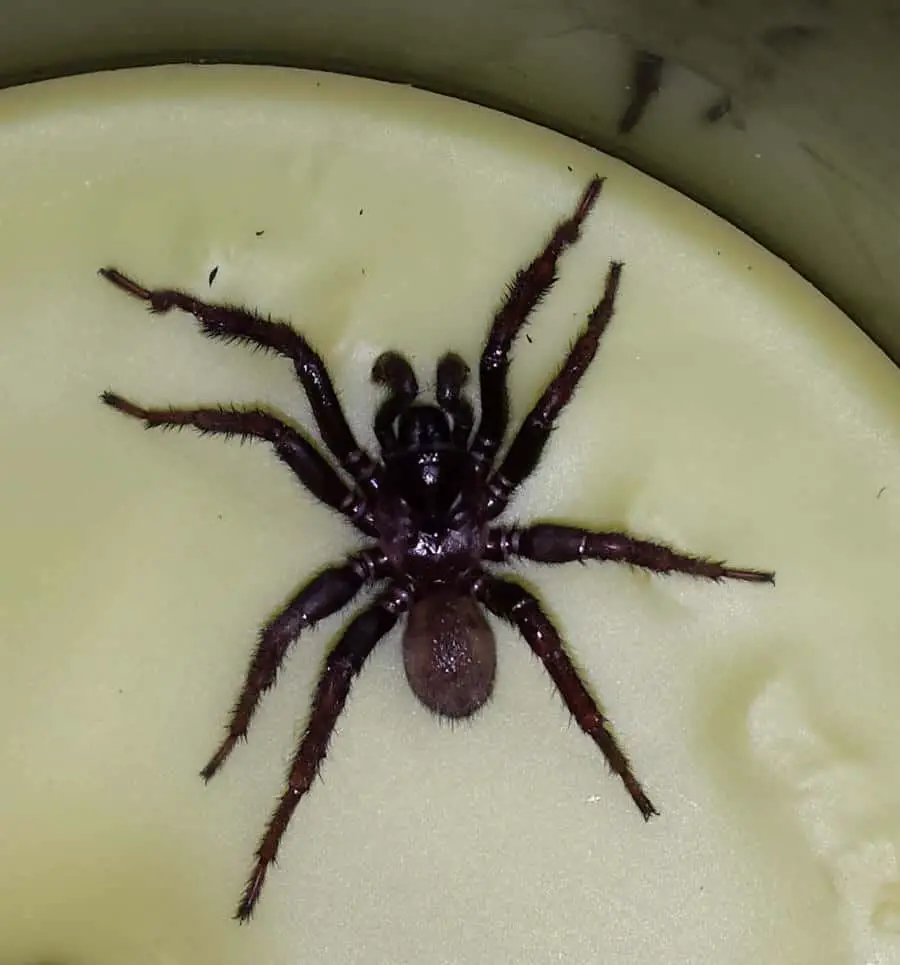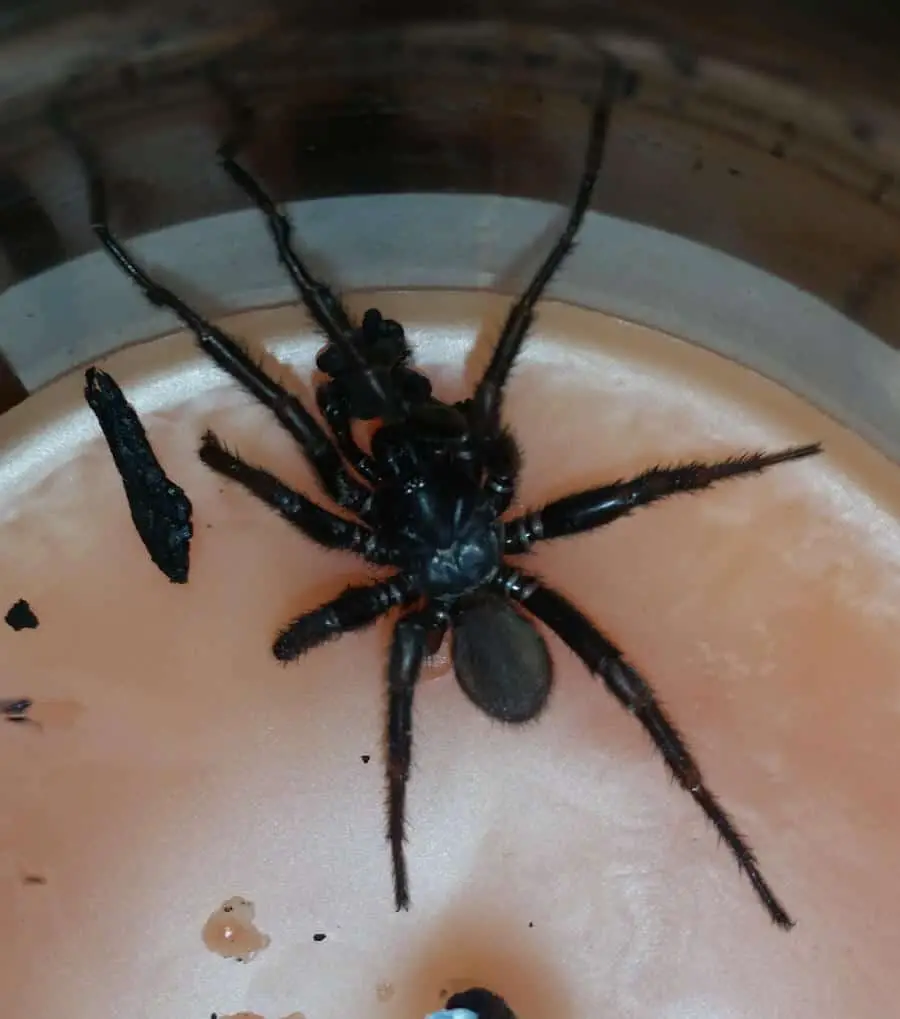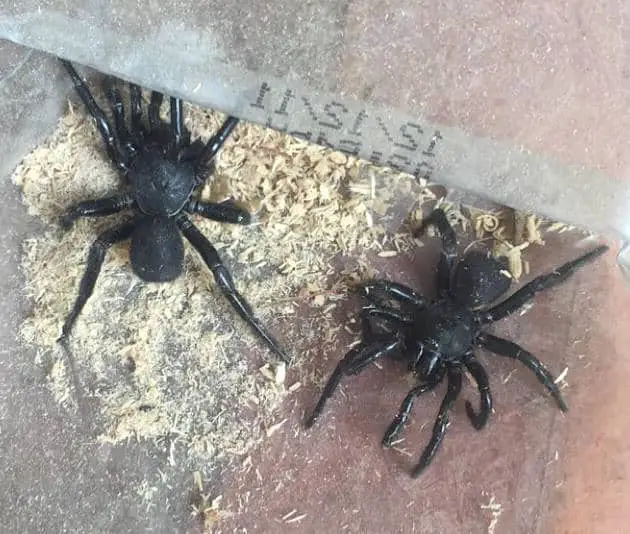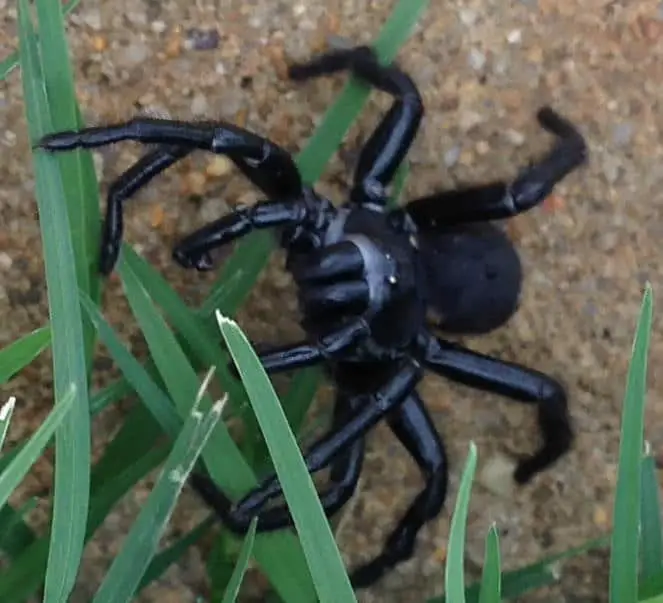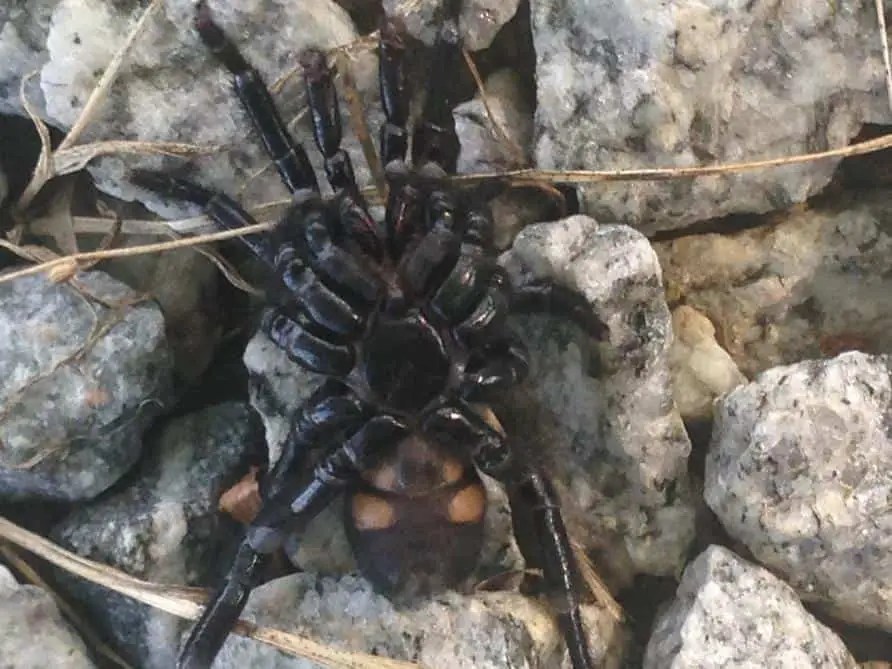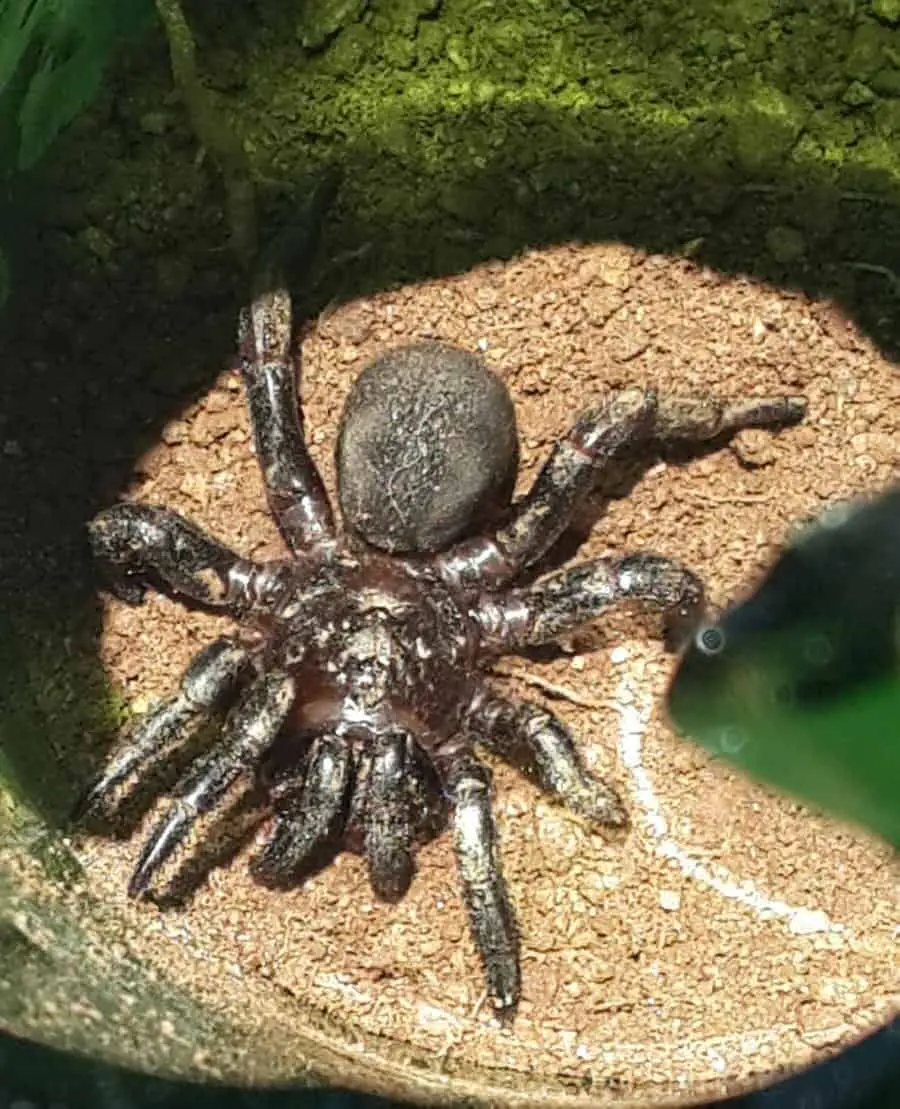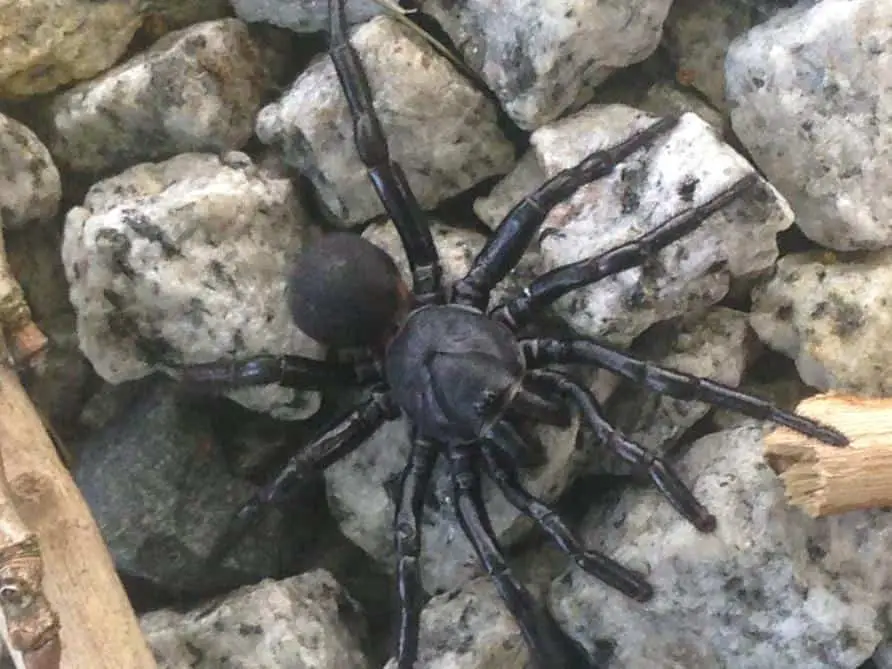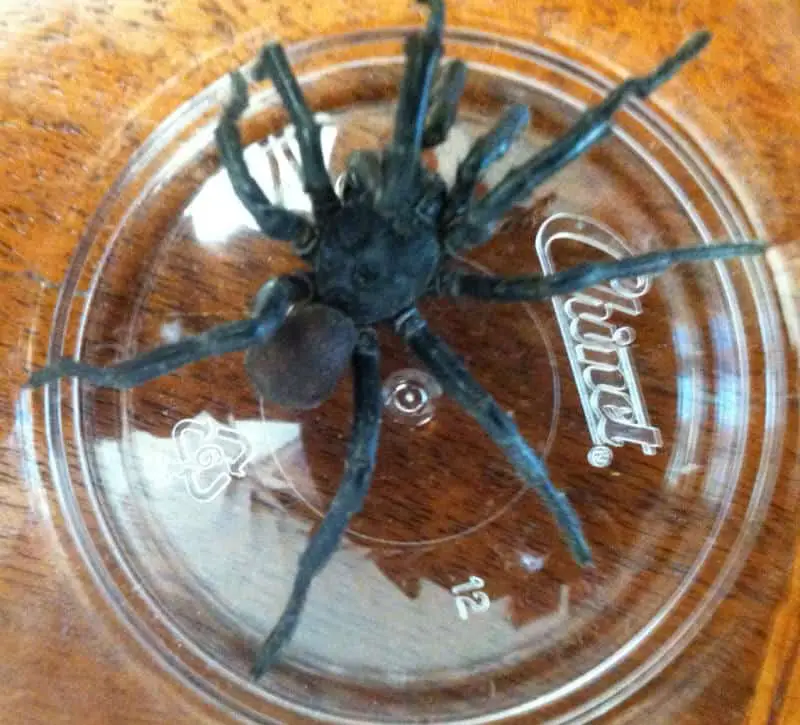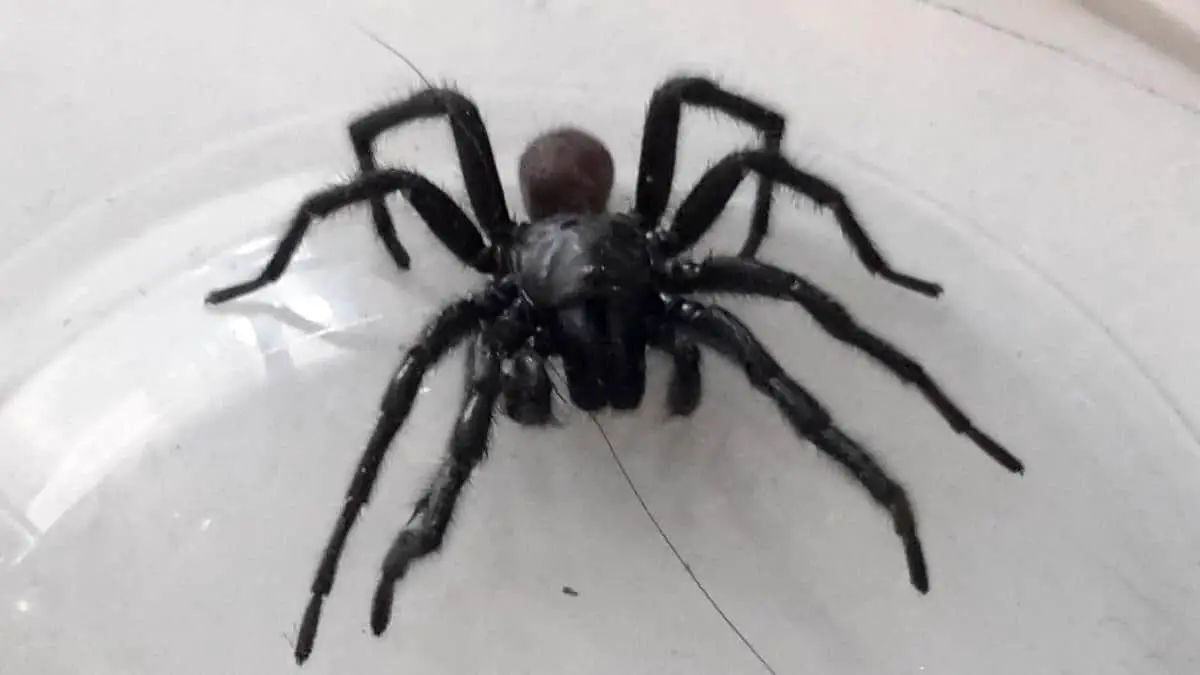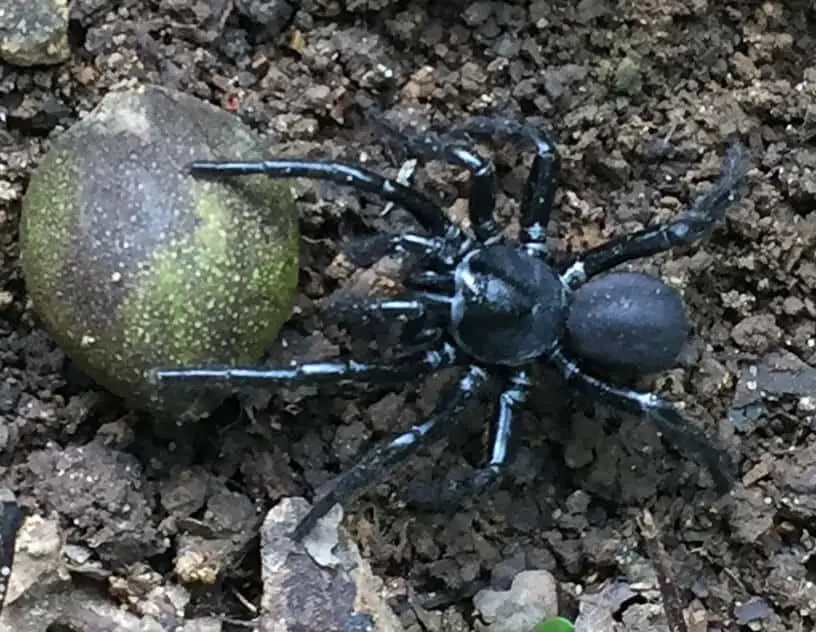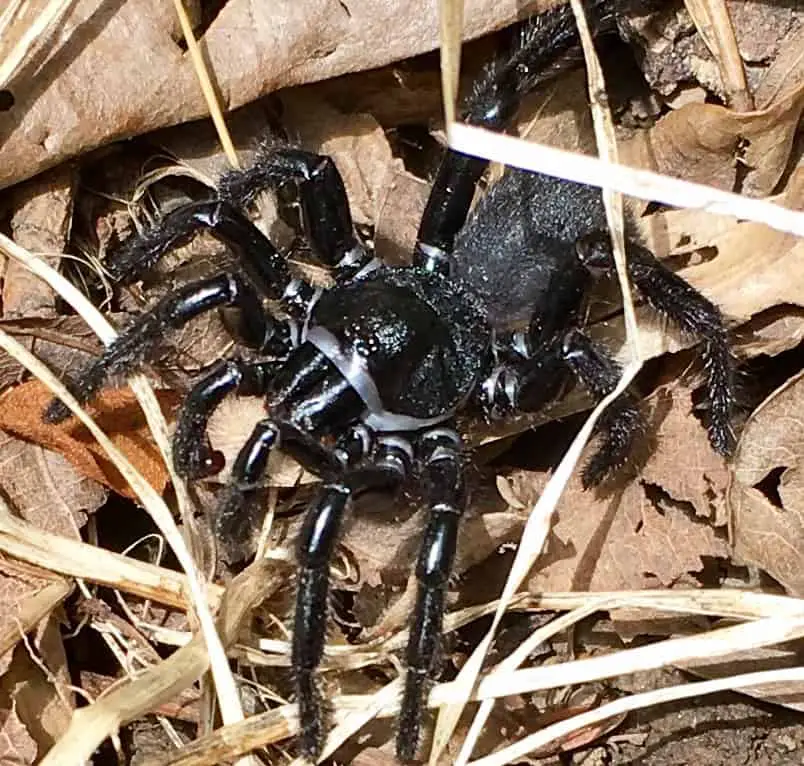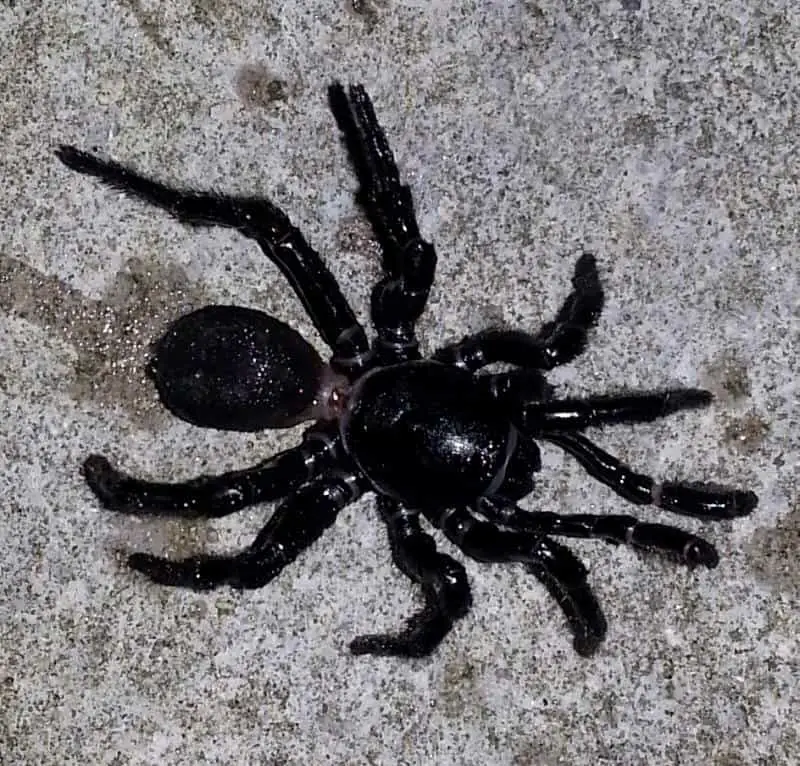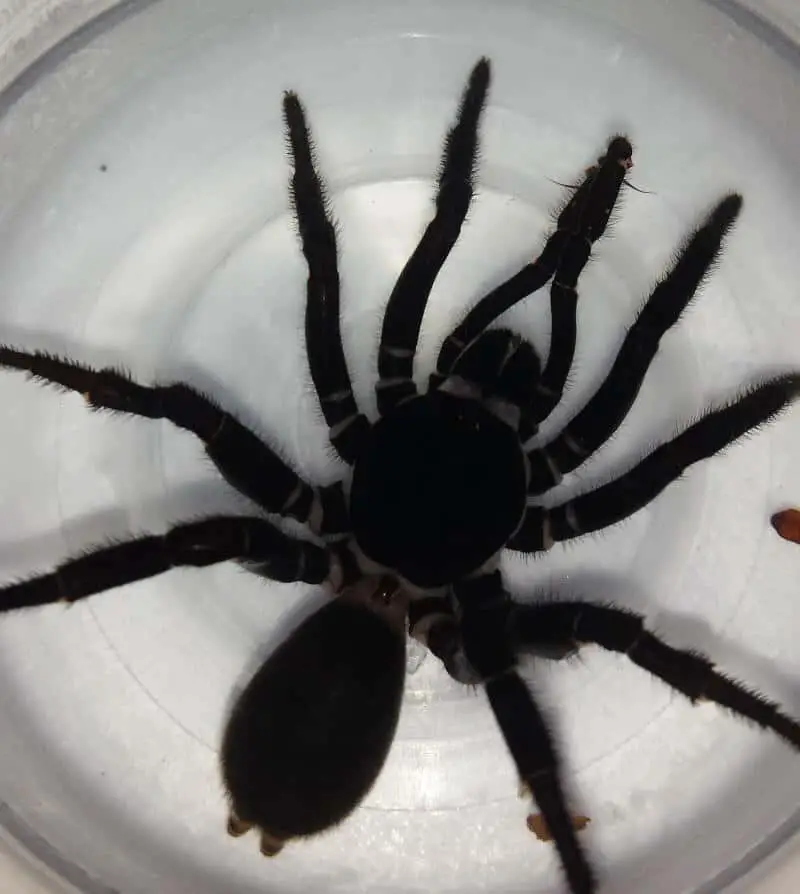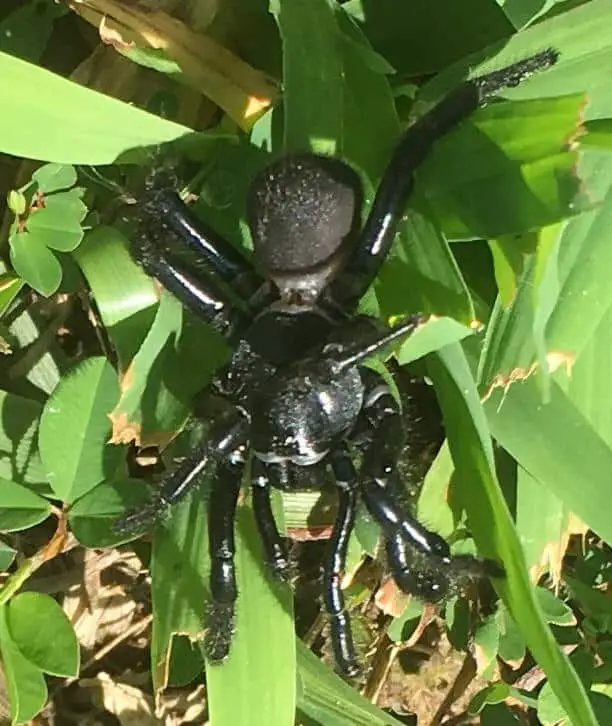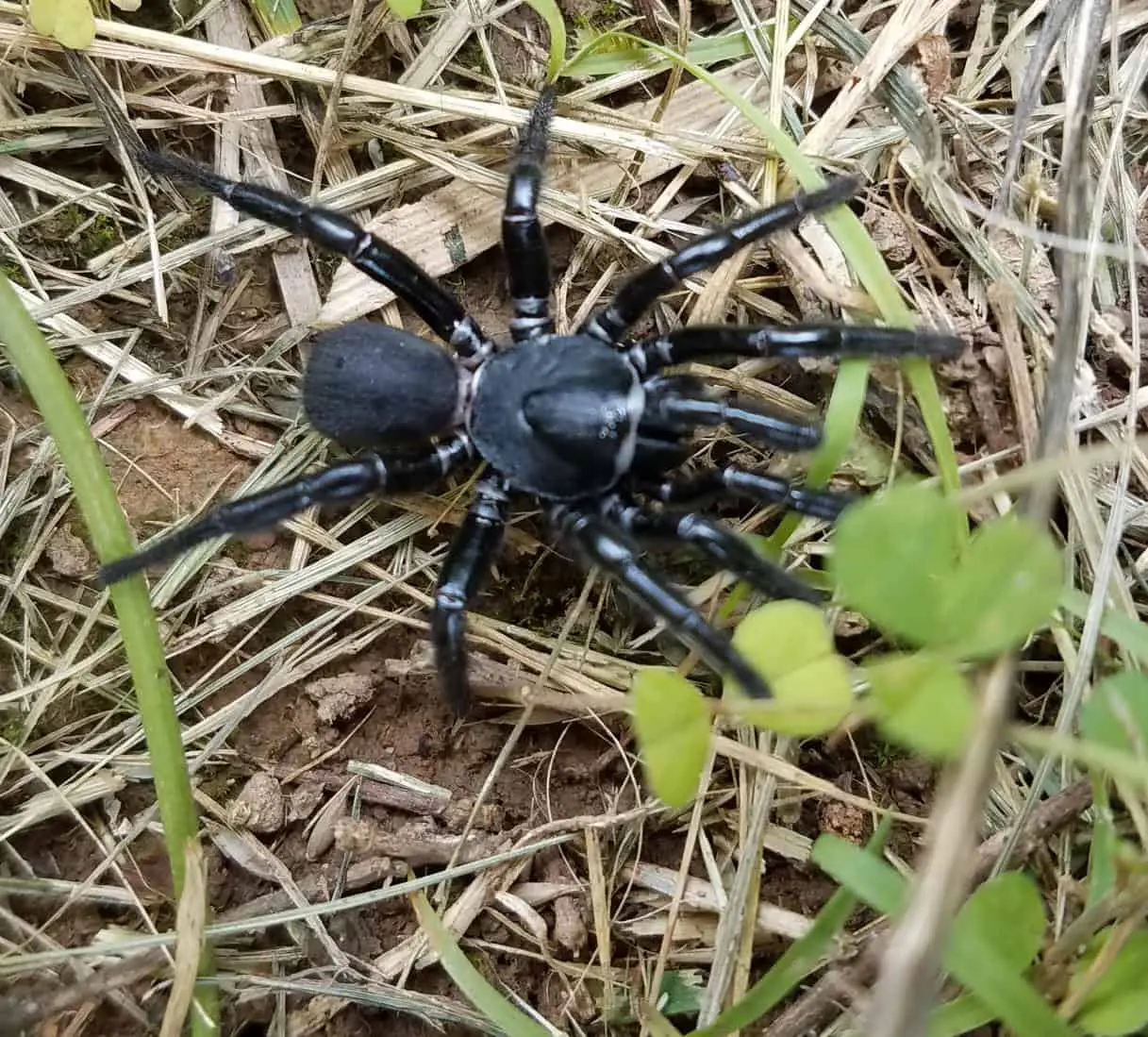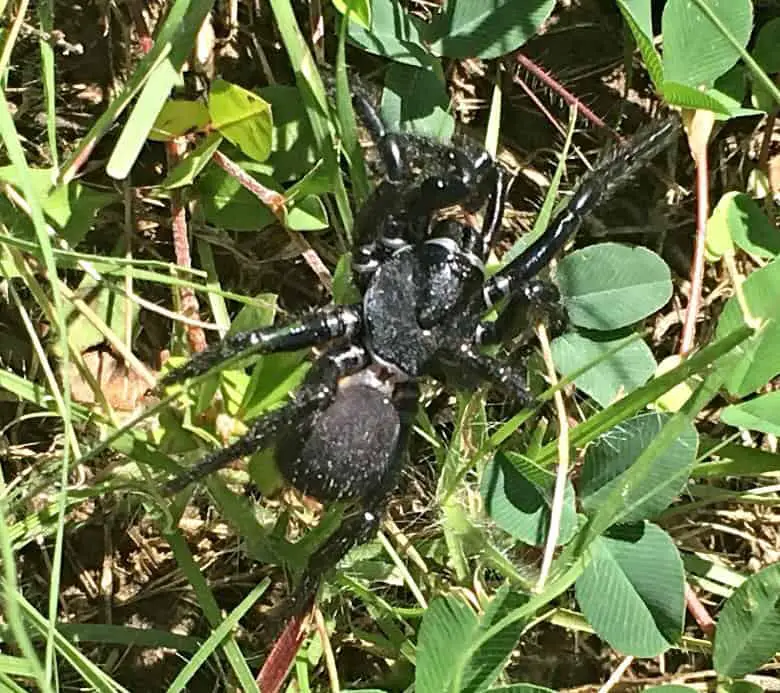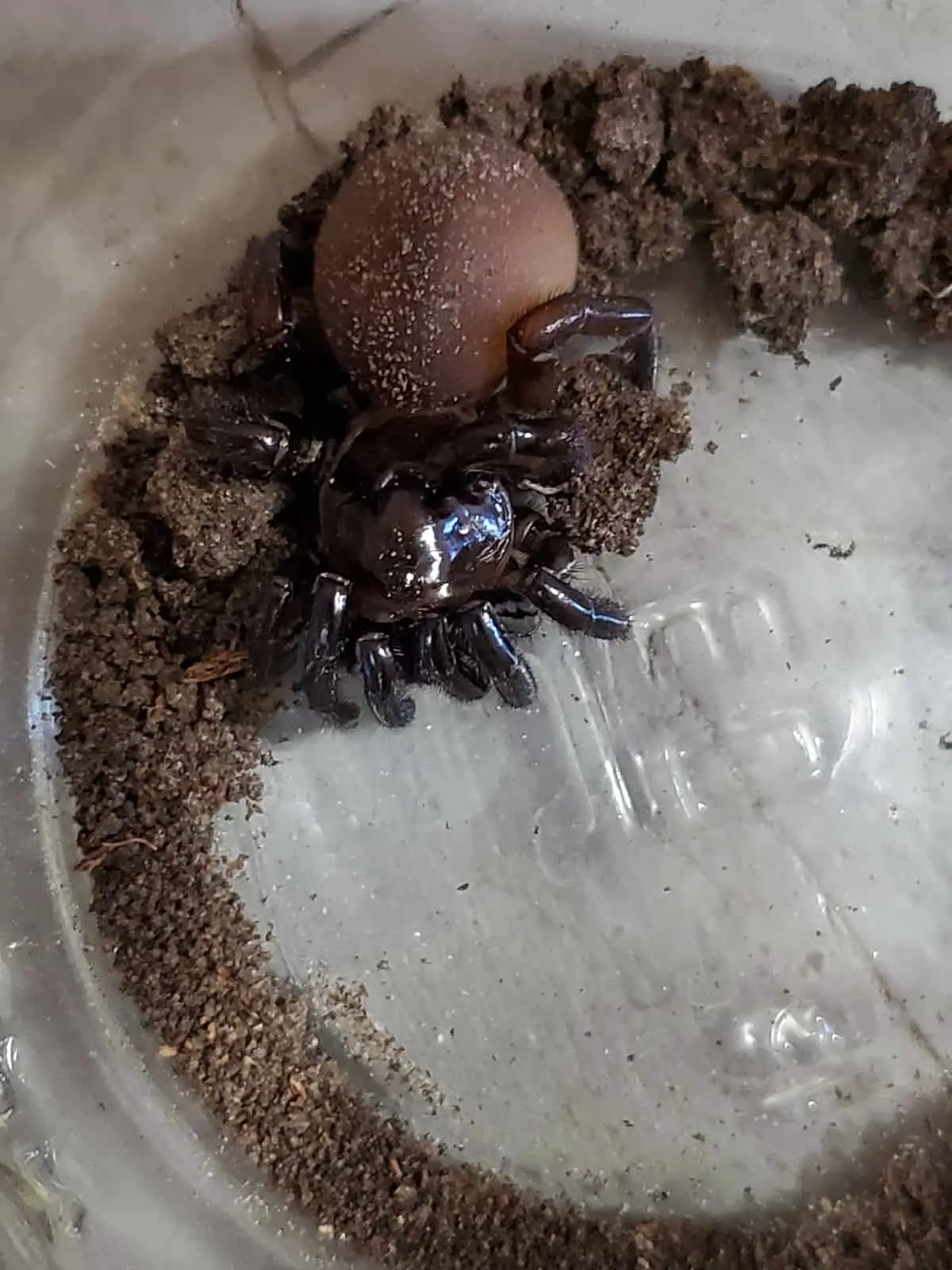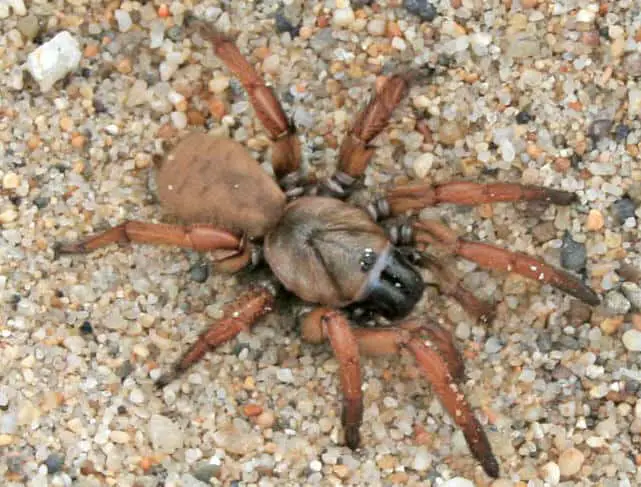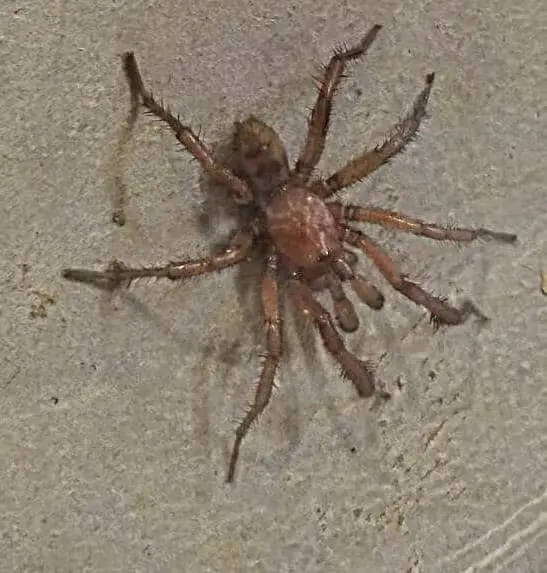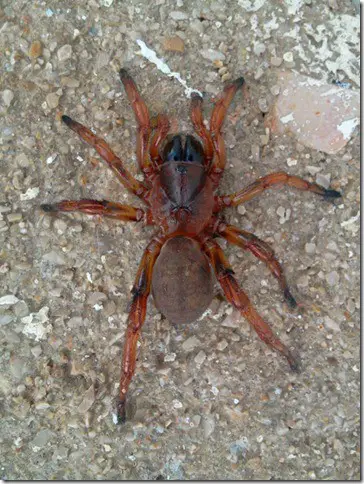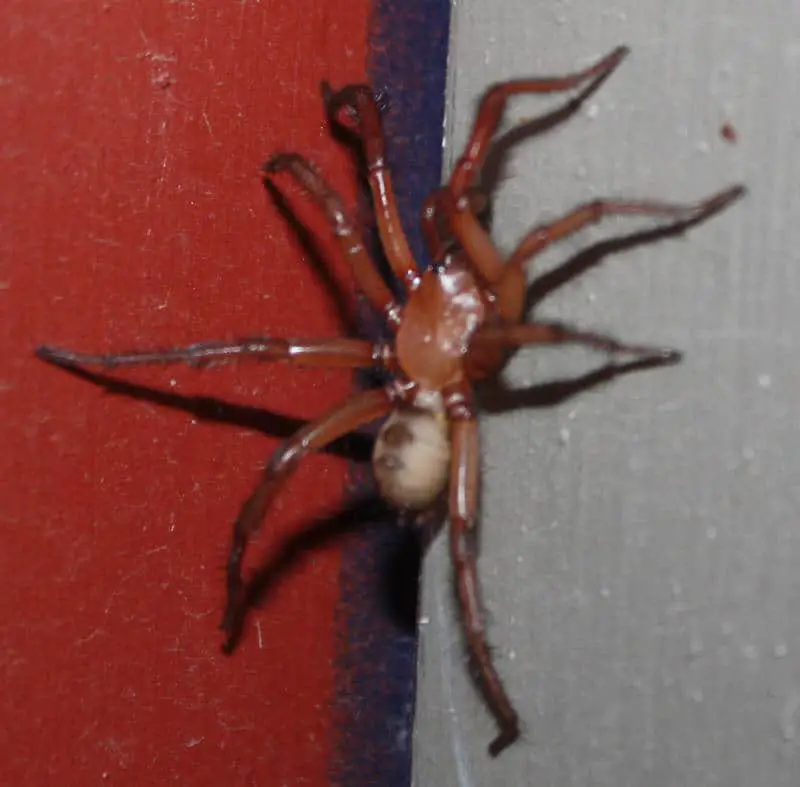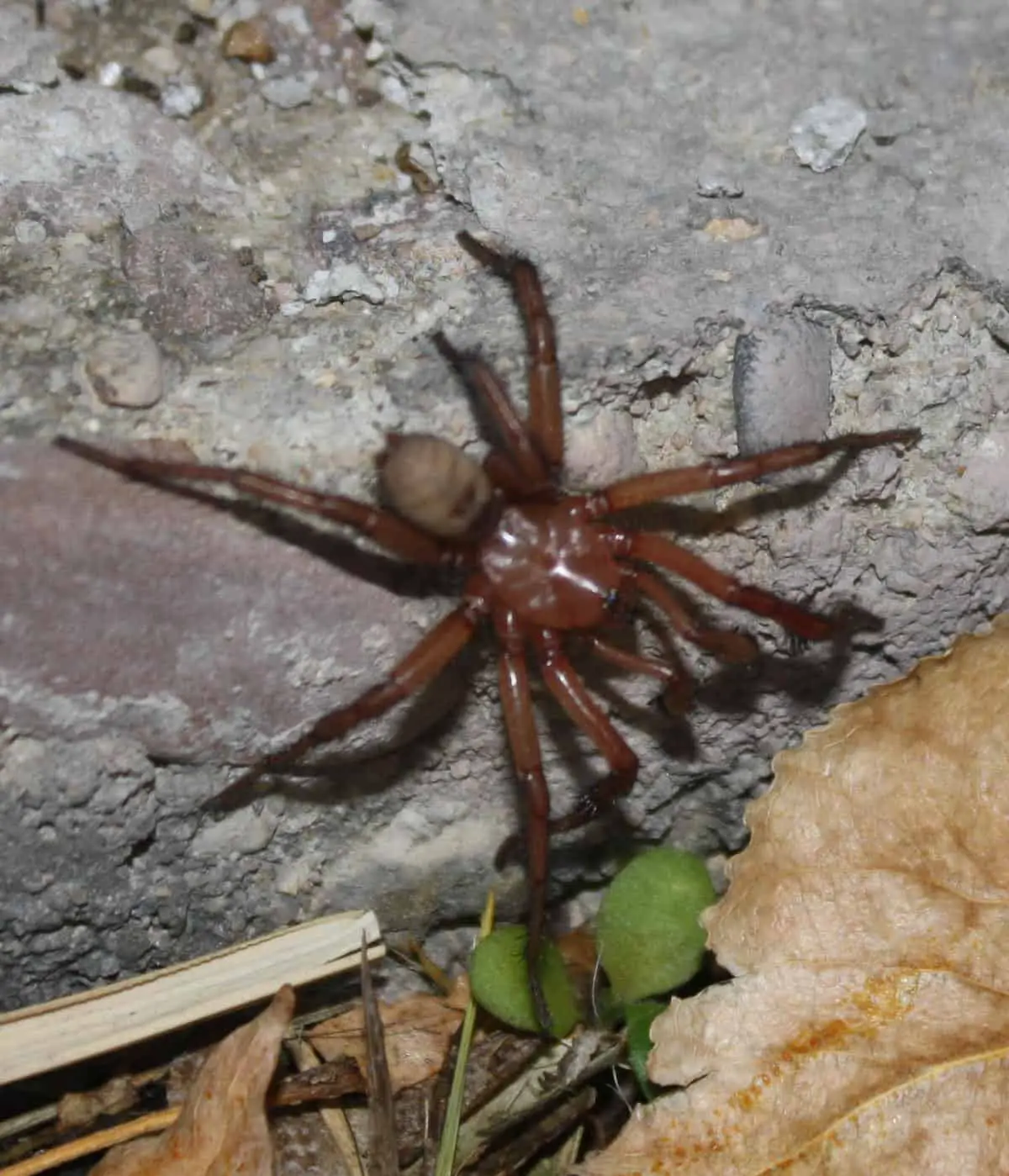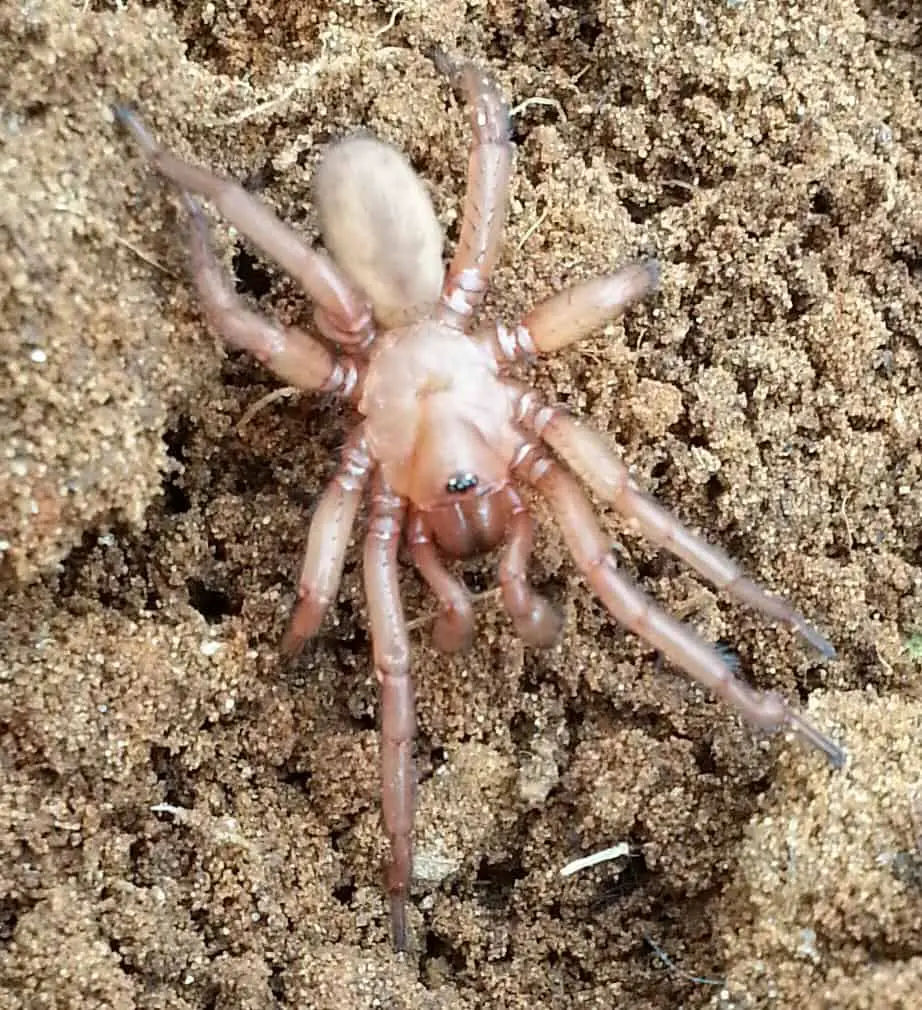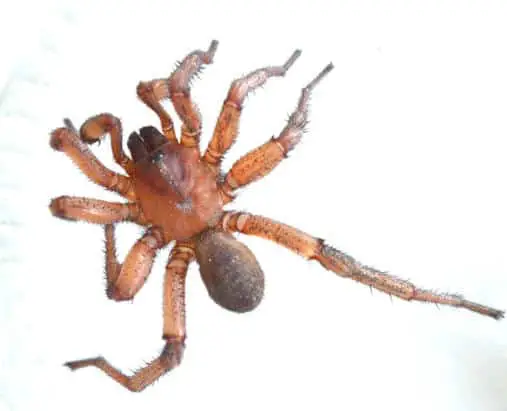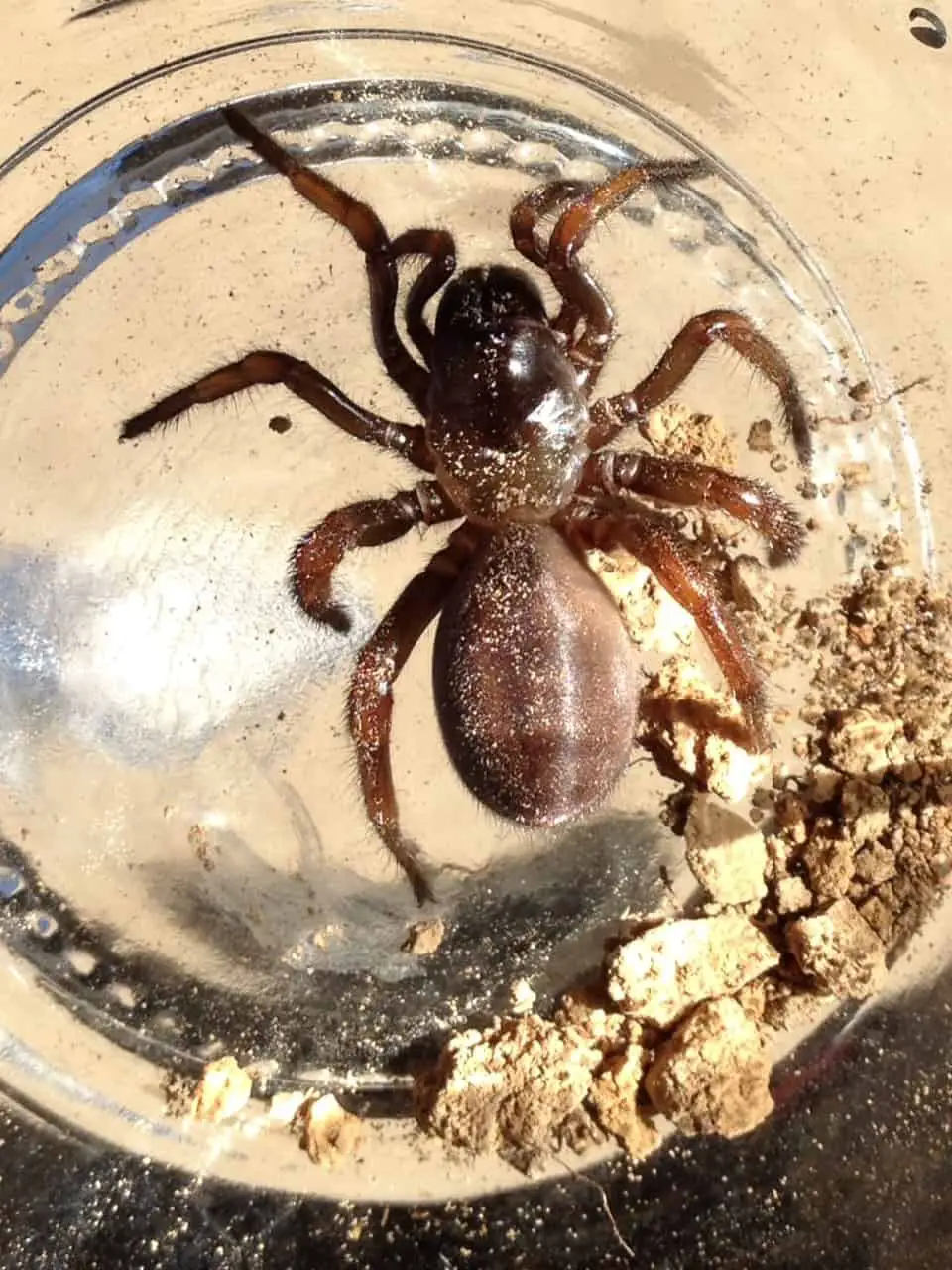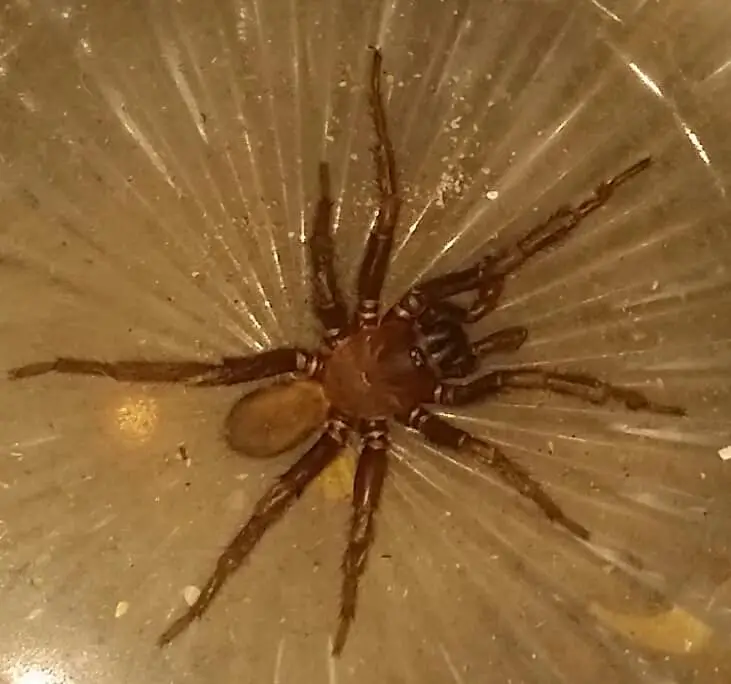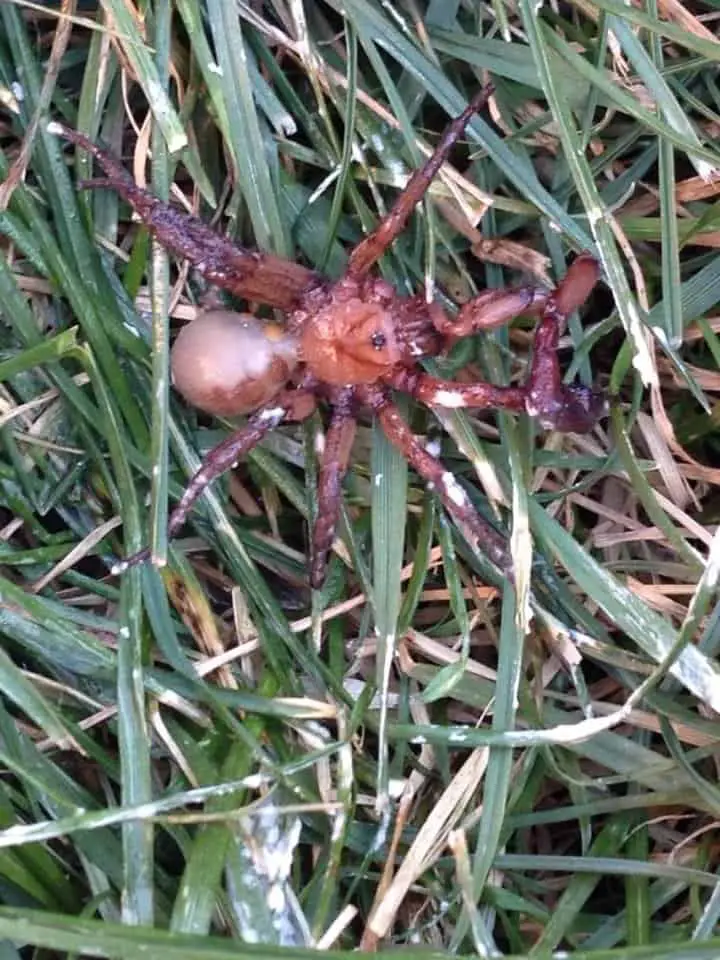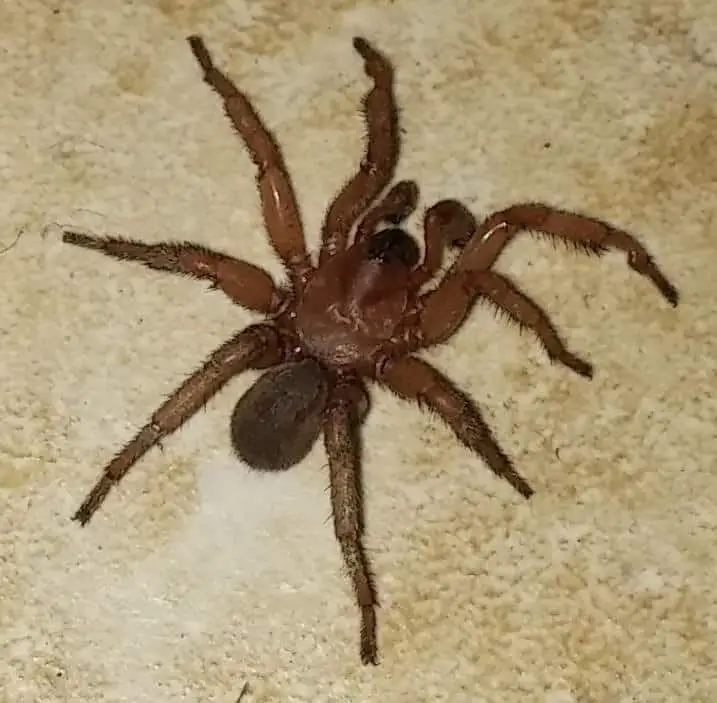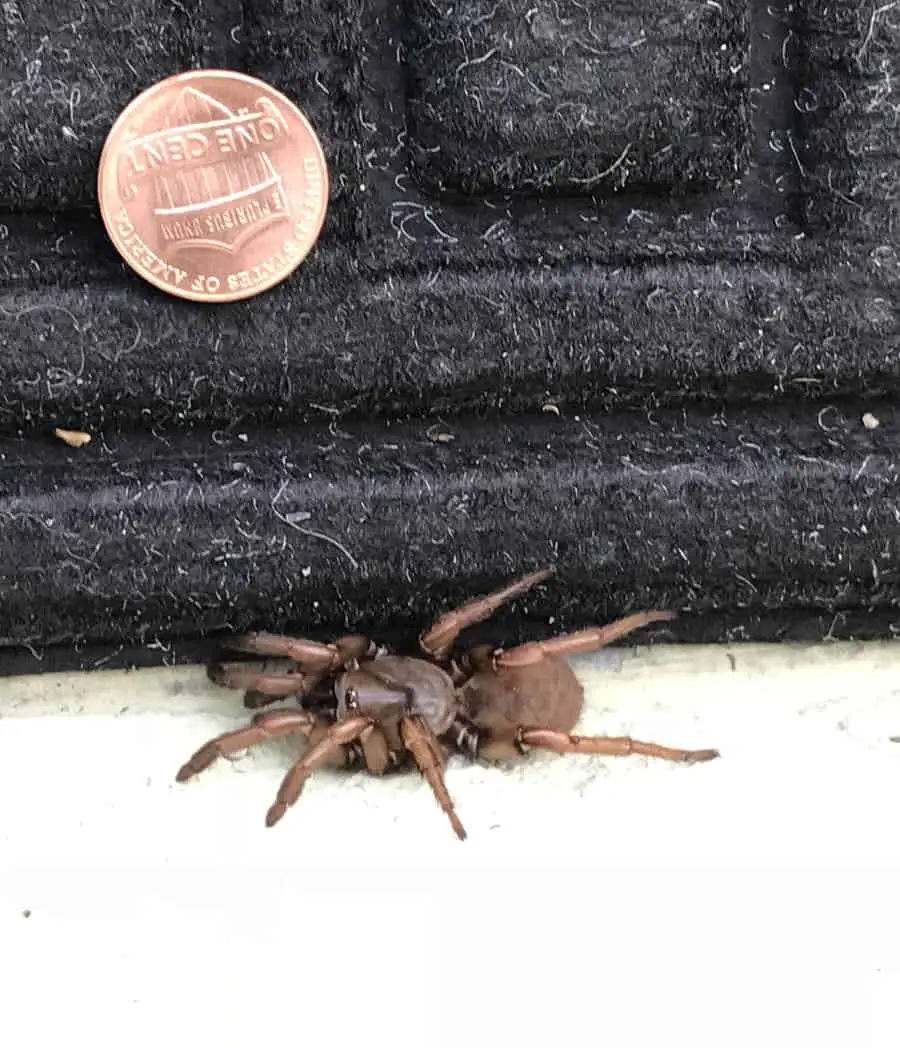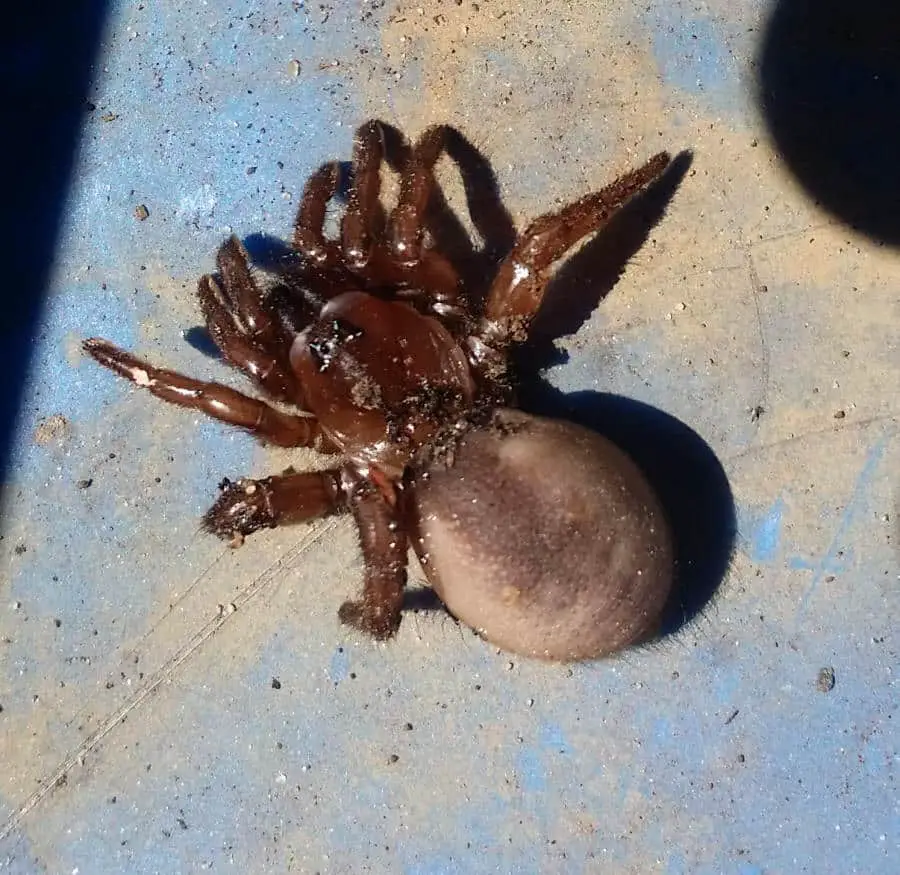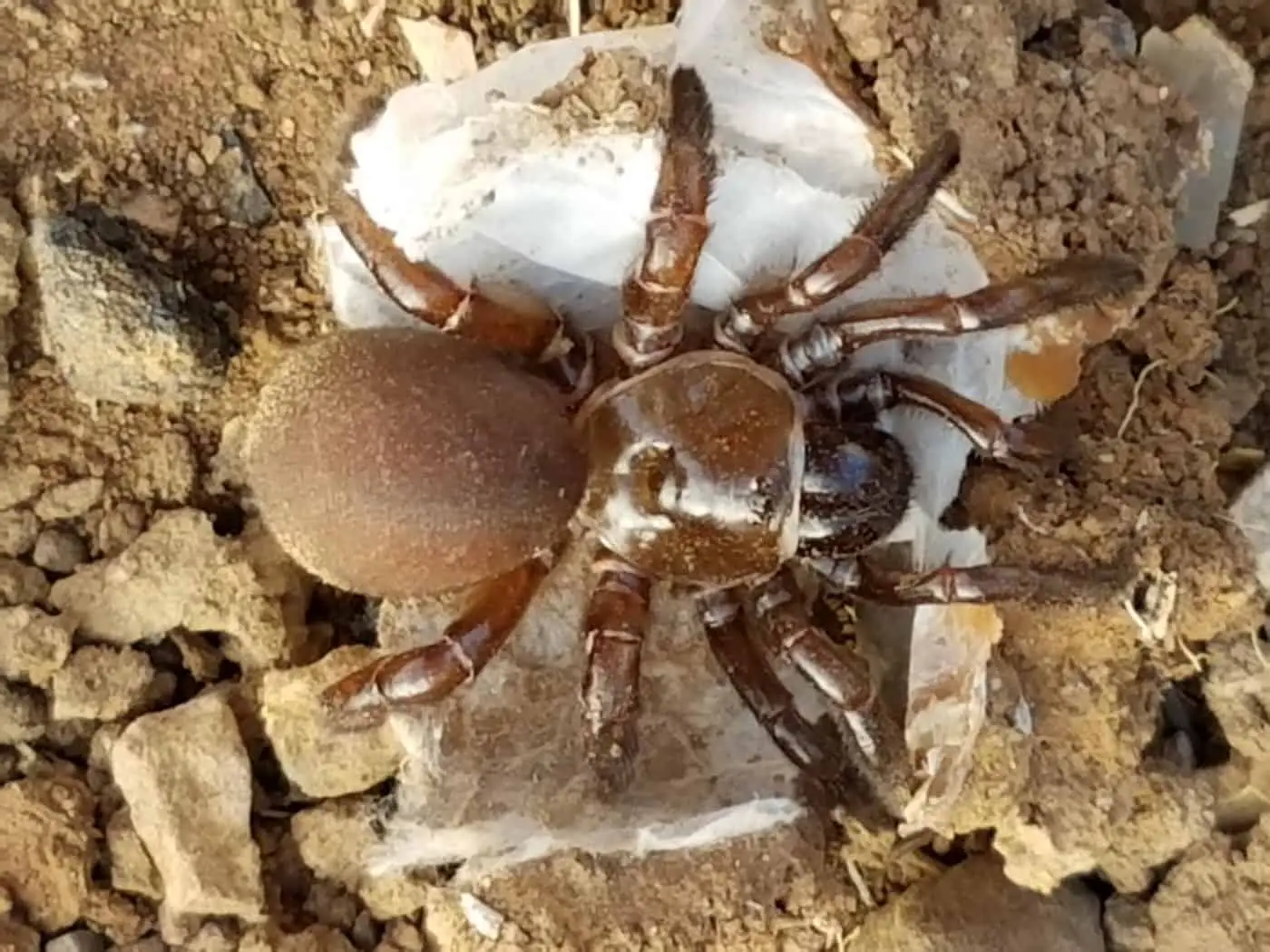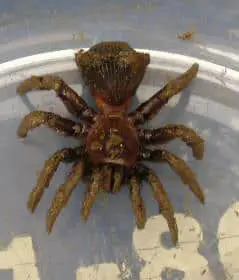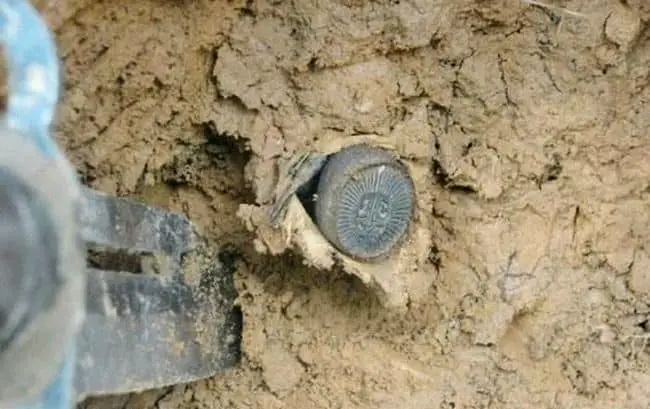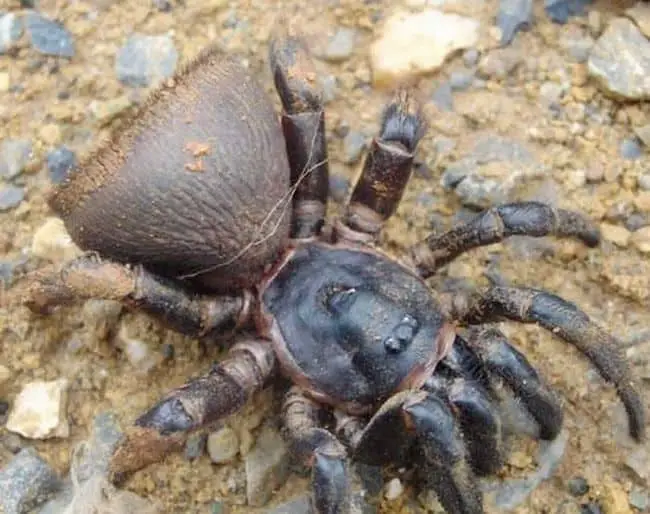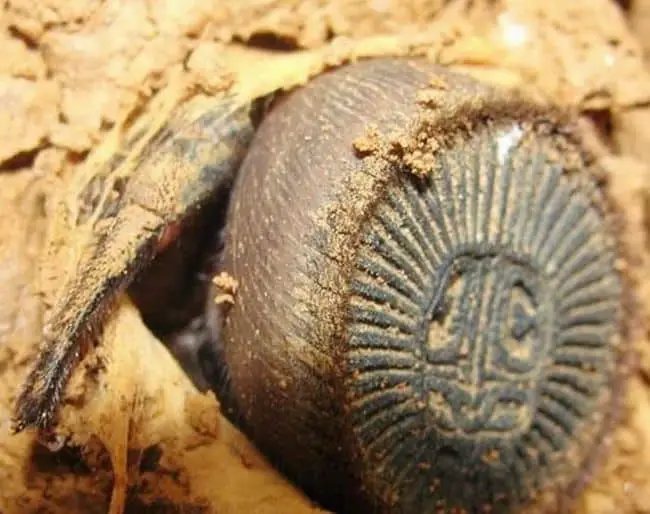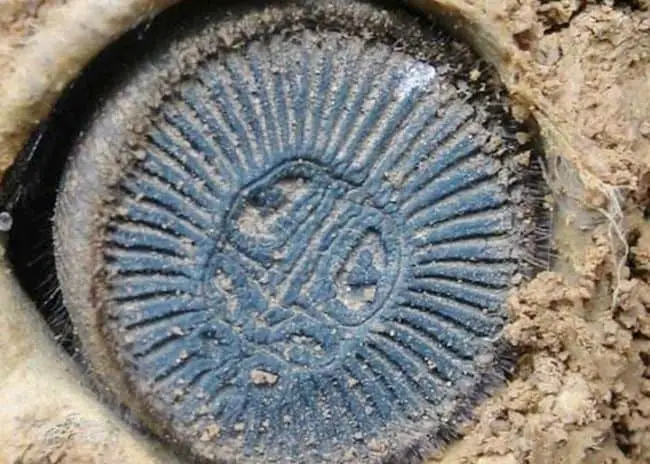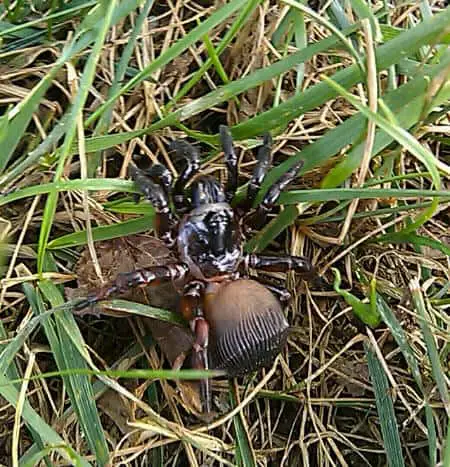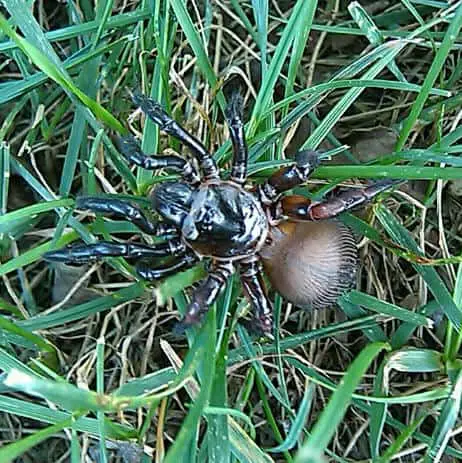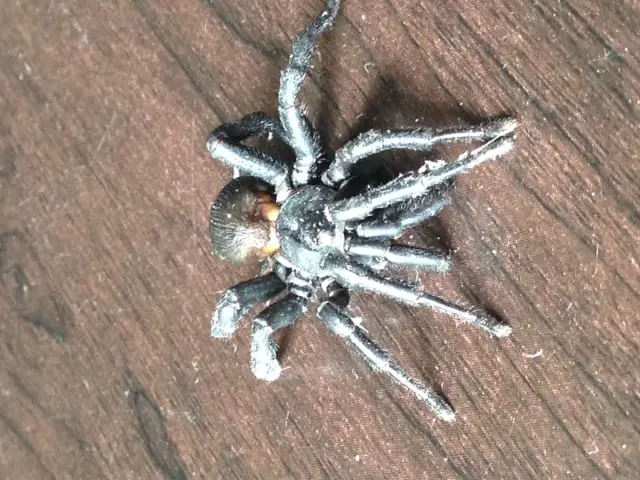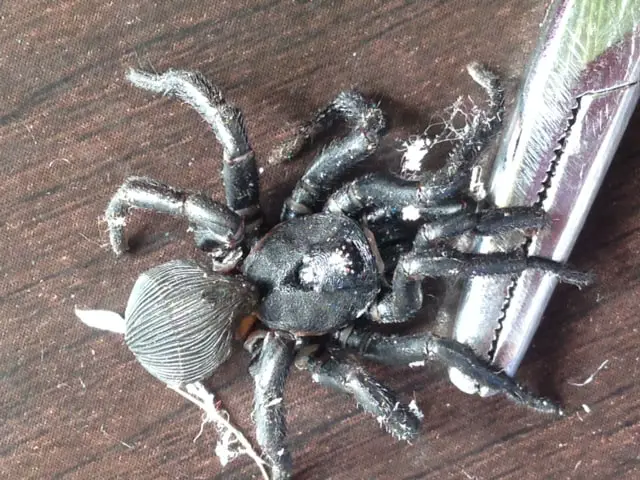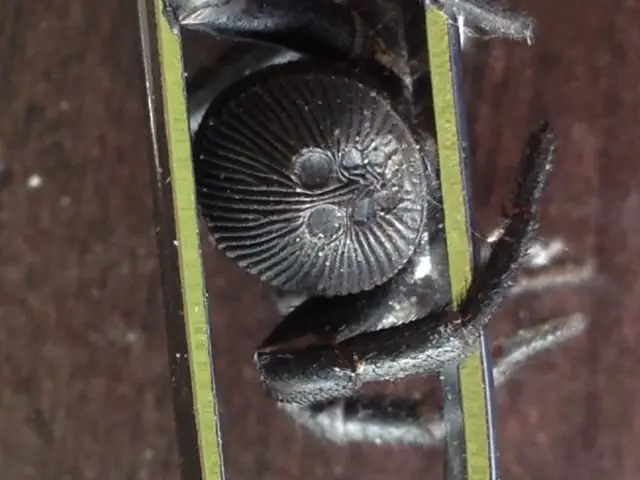The name Trapdoor spider covers several families and many different species. Trapdoor spiders include the Funnel-web, Mouse, Whistling, and Curtain-web spiders; they are distinguished by the stocky body, long leg-like palps, and two knee-like lobes to which the fangs join (chelicerae) in front. Most live in burrows with or without trapdoors in the ground, but some live in trees. Trapdoor spiders have powerful chelicerae and four pale patches (the book-lungs) under the abdomen. The correct identification of Trapdoor spiders is often quite complicated.
Trapdoor spiders can be distinguished from the more dangerous Funnel web spider by its brown or mottled markings. When in danger, a Trapdoor spider will freeze or flee whereas a Funnel web will rear back aggressively. Trapdoor spiders construct burrows lined by their silk and closed by a hinged door of silk, moss, and soil. There they lie in wait for passing prey, usually an insect; when the prey touches silken threads radiating out on the ground near the door, the spiders quickly open the door and seize it. Closely related to Tarantulas, Trapdoor Spiders make up the family Ctenizidae.
They range in size from 1.5 cm – 3 cm in body length, are harmless to humans, and are found in many warm climates. They also use their burrows for protection and as nest sites, the female spinning her egg sac for about 300 eggs in the burrow.
All photos are copyright to their owners and may not be reproduced without permission. Click on the images to enlarge them.
Table of Contents
Black Trapdoor Spider
Most of the photos below are of male Trapdoor Spiders. The males wander looking for a female and are often found in backyard swimming pools where they learn they can’t swim!!
Brown Trapdoor Spider
Ravine or Cork-Lid Trapdoor Spider
Ravine Trapdoor Spider is the common name of a rare, oddly shaped North American spider, Cyclocosmia truncata, belonging to the trapdoor spider family Ctenizidae. The Ravine Trapdoor Spider is a burrowing spider, inhabiting sloping riverbanks and ravines in Georgia, Alabama, and Tennessee. The abdomen of spiders in this genus is abruptly truncated and ends in a hardened disc which is strengthened by a system of ribs and grooves. They use this to clog the entrance of their 7 to 15 cm deep vertical burrows when threatened, a phenomenon called phragmosis.
Strong spines are located around the edge of the disc. The four spinnerets are found just anterior to it, with the posterior, retractable spinnerets particularly large. The disc diameter in the females is 16 mm. The individual species are separated from each other by the pattern of the abdominal disc, the number of hairs on its seam, and the shape of the spermathecae. The female reaches a body length of 1.2 inches (3 centimetres). The male grows to 0.75 inch (1.9 centimetres). This species can be incredibly difficult to find due to the superb camouflage of their burrows. Colonies of Cyclocosmia truncata tend to be focused within certain micro-habitats. They are primarily found in hilly, undisturbed woods that are far from any flood-prone bodies of water, such as rivers (They are frequently found near stream banks, however). The burrow is a vertical tube that narrows toward the bottom. Only the bottom portion of the burrow is silk lined.

